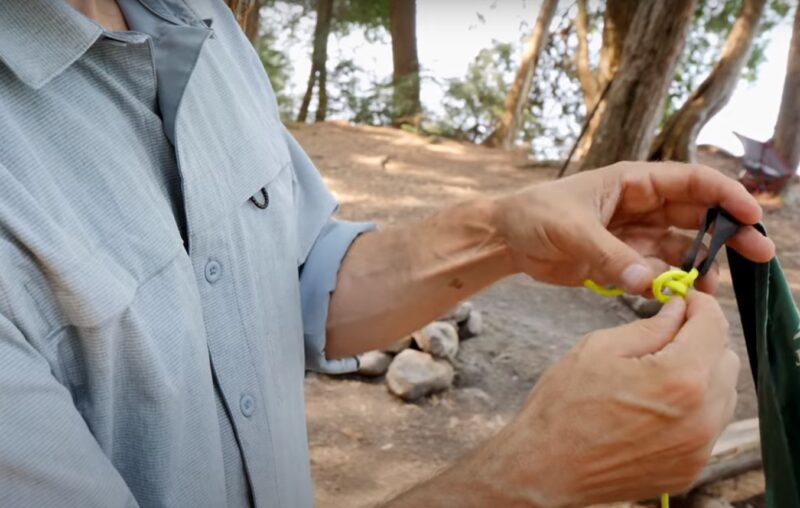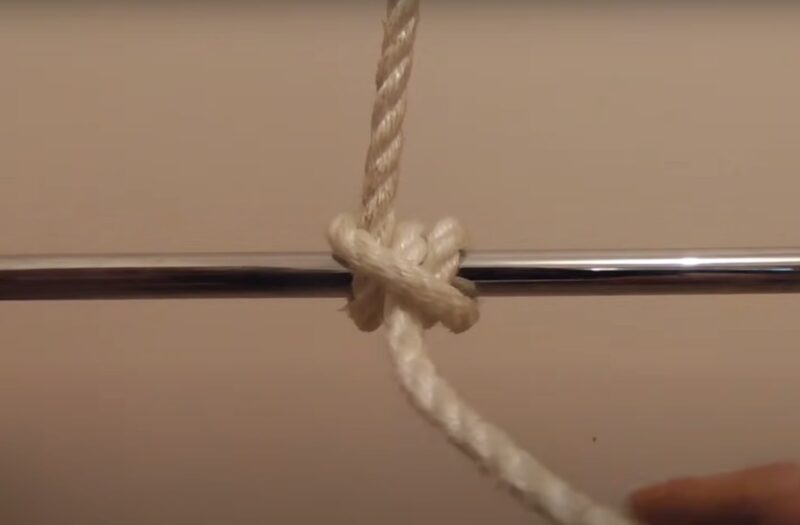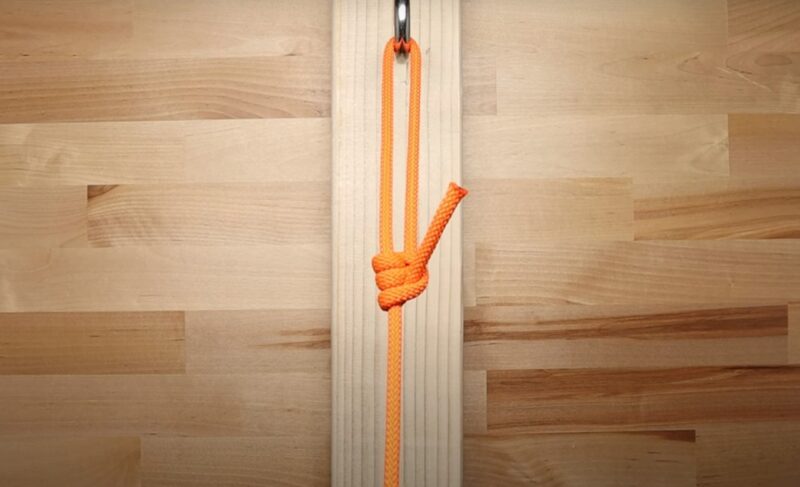If you love camping and backpacking, you need to know the Tautline Hitch. This knot is simple, versatile, and strong.
You can adjust it easily on any line, making it perfect for setting up tents, tarps, and hammocks in the wild.
It’s so useful that even astronauts used it to fix the Hubble Space Telescope in space. In this guide, I’ll show you step-by-step how to tie the Tautline Hitch.
I’ll also explain why it works so well and how you can use it for different purposes. By the end of this guide, you’ll be a master of this amazing knot.
Key Takeaways
Why the Tautline Hitch?

Before we start with the “how,” let’s explore the “why.” The Tautline Hitch’s value extends beyond its mechanical virtues; it embodies efficiency, reliability, and versatility.
Its ability to hold fast under load yet remain adjustable makes it a crucial knot for securing gear, adjusting tent lines, or any scenario where variable tension is required.
The knot’s historical significance and practicality have even made it a staple in Boy Scouts training across America, underlining its importance in cultivating outdoor skills among youth.
It is safe to say that this knot is almost as important as slip knot.
Materials You’ll Need
To practice tying the Tautline Hitch, you’ll need:
- A rope, cord, or any suitable line
- An anchor point (a pole, tree, or any stable object)
Step-by-Step Guide to Tying the Tautline Hitch
Step 1: Anchor and Coil
Begin by wrapping your line around your anchor point. Ensure the working end (the free end of the rope) is long enough to complete the knot.
Step 2: Far-side Coil
Create a loop by wrapping the working end around the standing part of the line (the part leading to your anchor point) twice, starting from the far side towards you.
These coils are what give the Tautline Hitch its adjustable characteristic.
Step 3: Tighten
After the initial two coils, bring the working end back over the standing part and make a third wrap, this time outside the coils you just created.
This outside coil should be closer to the anchor point than the first two.
Step 4: Adjust Tension
Pull on the working end to tighten the knot while holding the standing part securely.
Adjust the tension as needed by sliding the knot along the standing part of the line.
Applications of the Tautline Hitch in the Great Outdoors
The Tautline Hitch shines in its versatility. Use it to:
- Secure tarps and tents, allowing for quick adjustments to tension in response to changing weather conditions
- Create adjustable lines for hanging camping gear or food away from wildlife
- Fasten boats or kayaks securely, with the ability to quickly release or adjust tension as needed
Troubleshooting Common Issues
- Slipping Knot: Ensure your coils are neatly stacked and the outside coil is properly tightened. Choosing the right type of rope can also make a difference; synthetic ropes with a smoother surface may require an extra coil for increased friction.
- Difficulty Adjusting: If the knot is too tight or too loose, re-tie it with attention to the tension on the initial coils. The balance between tightness and adjustability is key.
Adjusting Under Load
- Problem: The knot is under load, and adjusting tension becomes difficult.
- Solution: Slightly relieve the tension by pushing the knot towards the anchor point, adjust as needed, then slide back to apply tension.
Knot Integrity Over Time
- Problem: The knot seems to lose its grip over extended periods.
- Solution: Periodic checks and adjustments are essential, especially in environments where rope might expand or contract due to moisture or temperature changes.
Comparing the Tautline Hitch with the Midshipman’s Hitch

The Midshipman’s Hitch, a close relative of the Tautline Hitch, offers a similar adjustable grip but with a slight variation in tying technique.
While both knots serve comparable purposes, the Tautline Hitch is often preferred for its simplicity and ease of use, especially for beginners.
Advanced Tips for Mastery
Knowing Your Ropes
Different materials behave differently under tension and environmental conditions.
For instance, nylon ropes, with their elasticity and resilience, are ideal for applications where slight give is beneficial.
Meanwhile, natural fiber ropes, which may absorb water and swell, offer increased friction, making them excellent for maintaining knot integrity in damp conditions.
Practice Makes Perfect
Consistent practice in various conditions and with different rope types is key to mastering the Tautline Hitch.
Try tying the knot with gloves on or in low-light conditions to simulate real-world scenarios.
Teaching Others
Passing on the knowledge of knot tying, especially to young adventurers and scouts, not only ensures the continuation of these essential skills but also deepens your understanding and appreciation of their practicality and elegance.
Related Knots and Variations

- The Rolling Hitch: Explore the Rolling Hitch for situations where the Tautline Hitch might slip, especially when applied to a smooth or round surface. The Rolling Hitch is designed for directional stability, making it better suited for securing loads along a horizontal path.
- The Adjustable Grip Hitch: For loads that require frequent adjustments, the Adjustable Grip Hitch offers an alternative method. This knot provides similar functionality to the Tautline Hitch but is known for its ease of adjustment under load.
FAQs
Can the Tautline Hitch be used with all types of rope?
The Tautline Hitch works with most types of rope, but it performs best with non-slippery materials. Very smooth or stiff ropes might not hold as securely.
Is the Tautline Hitch suitable for climbing?
No, the Tautline Hitch is not recommended for climbing as its security cannot be guaranteed under varying loads.
Climbing requires specialized knots tested for those conditions.
How does the Tautline Hitch differ from a traditional hitch knot?
The Tautline Hitch is adjustable, allowing you to change the tension on a line without untying the knot, unlike traditional hitch knots that are fixed once tied.
Can the Tautline Hitch slip under heavy loads?
While designed to hold securely, it may slip under very heavy loads or, if not tied correctly, especially on smooth ropes.
How do weather conditions affect the Tautline Hitch?
Extreme weather conditions can affect the knot’s grip, especially in wet conditions with certain rope materials that may stretch or contract.
What is the best way to untie a Tautline Hitch after heavy use?
Apply pressure opposite to the direction of tension to loosen the knot, then gently work the coils apart.
If the knot is very tight, using a small tool like a marlinspike can help.
Final Words
The Tautline Hitch, with its storied history and practical application, remains a fundamental skill for outdoor enthusiasts.
Whether you’re adjusting the tension on a shelter or securing cargo, the Tautline Hitch proves time and again that some of the simplest tools in our arsenal can be the most powerful.
Embrace the challenge, practice the technique, and carry forward the tradition of this indispensable knot into your next adventure.
